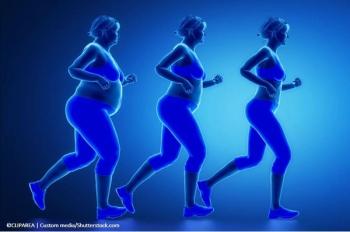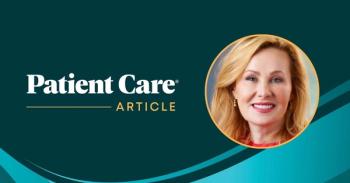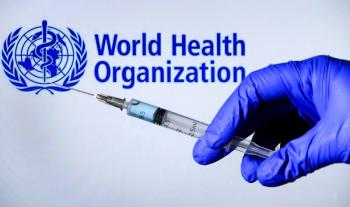
Breast Cancer Screening: At What Age to Stop?
Some women 75 and older who are in good health and have excellent functional status may benefit from mammography screening, while others who are in poor health and have short life expectancies probably do not.
ABSTRACT: Some women 75 and older who are in good health and have excellent functional status may benefit from mammography screening, while others who are in poor health and have short life expectancies probably do not. The most significant risk of screening the oldest-old women is the detection of tumors that may not become clinically important during a patient's lifetime. The American Geriatrics Society encourages screening mammography for women younger than 85 who have at least 5 years' life expectancy and for healthy women 85 and older who have excellent functional status or who feel strongly about the benefits of screening. Several tools are available to help you target screening to older women with longer life expectancies. When you discuss stopping screening with older women who have shorter life expectancies, it is important to address the issues that make women want to continue screening, including habit and the need for reassurance.
Key words: breast cancer, mammography, screening, elderly
As more and more adults are leading healthy and independent lives well into their 80s and 90s, clinicians are increasingly faced with the difficult decision of whether to screen these patients for cancer. Guidelines from the US Preventive Services Task Force (USPSTF) now provide age cut-offs at which to stop screening older adults for prostate and colon cancers.1,2 The USPSTF does not provide an age cut-off at which to stop screening older women with mammography; however, the USPSTF recently concluded that the evidence is insufficient to recommend for or against breast cancer screening for women 75 years and older and further recommends that these women understand the uncertainty of the balance of benefits and harms of mammography before undergoing screening.3
Although experts recommend stopping mammography screening among older women with less than 5 to 10 years' life expectancy,4,5 I found that 39% of women 80 and older with probable life expectancies of less than 5 years were screened with mammography.6 This may be partly attributable to clinicians' discomfort about discussing with older women the decision to stop screening, difficulty in determining patient life expectancy, and uncertainty about guidelines.7
One of the reasons that guidelines for breast cancer screening among older women are vague is that none of the 8 randomized controlled trials that evaluated mammography included women 75 and older. Observational studies demonstrate a possible decrease in breast cancer mortality among healthy women 80 and older who are regularly screened with mammography8-10; however, these studies are limited by lead time, length time, and selection bias.
While some experts generally encourage screening elderly women, others warn that screening may result in the detection of tumors that would not have become clinically important if they had not been found with mammography (overdiagnosis).4 In these cases, oldest-old women are exposed to the burdens of treatment and the anxiety of living with cancer without the benefit of improved quality or quantity of life.4
In this article, I discuss the benefits and risks of screening older women with mammography, and I review current policy and guidelines. I also provide tools to help you decide whether or not to screen an individual patient.
EVIDENCE SUGGESTING BENEFIT OF MAMMOGRAPHY SCREENING FOR THE OLDEST-OLD
While breast cancer–specific mortality rates have declined among women younger than 70 years, they have risen for women 80 years and older; these trends may be a result of underscreening and/or undertreatment of the oldest-old.11-13 The oldest-old contribute the greatest burden to the number of total deaths from breast cancer each year (approximately 27% of breast cancer deaths in 2001 were among women 80 years and older, even though they had only 13% of incident breast cancers).12
Box I – Four-Year Mortality Index for Older Adults
Three observational studies have examined the effect of screening mammography on breast cancer mortality8-10:
Although it remains unknown whether earlier detection with mammography leads to a survival benefit in older women, several studies demonstrate that screening older women is associated with detection of breast cancer at earlier stages, which may result in reduced morbidity from advanced disease.8-10 In addition, since the sensitivity of mammography increases as women age, older women are less likely to experience a false-positive test than younger women.14 The most common benefit of mammography screening may occur every time the results are negative and the oldest-old are reassured of their health.15
EVIDENCE SUGGESTING RISK OF MAMMOGRAPHY SCREENING FOR THE OLDEST-OLD
The most significant risk of screening the oldest-old may be finding tumors that may not have become clinically important during a patient's lifetime.4 Oldest-old women may be at greater risk for overdiagnosis than younger women for the following reasons:
Decreased life expectancy: Women with life expectancies of less than 5 to 10 years are unlikely to derive any survival benefit from screening mammography.4,5 Meanwhile, the average life expectancy for a woman aged 80 is 9.8 years and for a woman aged 85 is 7.2 years.18
Ductal carcinoma in situ (DCIS): Only 28% to 39% of cases of DCIS, a noninvasive form of breast cancer, are thought to develop into invasive breast cancer after a 10- to 15-year follow-up.19 Because of the long period before DCIS may progress to invasive breast cancer, identifying DCIS in the oldest-old probably represents overdiagnosis.
Competing risks: Fewer than 2% of women 80 and older die of breast cancer.20 Even among women with a history of breast cancer, the oldest-old are much less likely to die of this disease than younger women (73% of women aged 50 to 54 with breast cancer die of this disease compared with 29% of those 85 and older).21 One study estimated that women with breast cancer and more than 3 comorbid conditions were more than 20 times more likely to die of a cause other than breast cancer within 3 years.21 Given this high risk of noncancer death, treatment of breast cancer in patients with significant comorbidity could be construed as overtreatment (treatment of breast cancers that would not have become clinically important).
Uncertainty about benefits of treatment of breast cancer in elderly women: A key prerequisite for screening a population for a disease is the availability of treatments that when given early in the course of the disease result in greater longevity or improved quality of life than when given when the disease becomes clinically detectable.22 However, the benefits of treating breast cancer in the oldest-old are uncertain because few of these women participate in clinical trials and also because treatments vary.
Many studies have shown that older women are less likely to receive definitive or recommended care for a new diagnosis of breast cancer than younger women.23,24 In addition, treatment of breast cancer in the oldest-old women is associated with greater morbidity. Complications from surgery increase as women age (operative mortality rates between 1% and 2% have been reported for older women undergoing breast cancer surgery).25 Short-term decreases in cognitive function may follow the administration of general anesthesia,26 and older women have greater arm morbidity after axillary lymph node dissections.27
Although few oldest-old women receive chemotherapy for breast cancer (1% of oldest-old women compared with 30% of patients aged 55 to 64 years), increased toxicity and mortality are associated with chemotherapy among older women (1.5% chemotherapy-related mortality for breast cancer patients 65 years and older compared with 0.2% for patients 50 years and younger).28 In addition, some older women may experience cognitive decline within 6 months after adjuvant chemotherapy.29 Nearly all women experience fatigue during treatment with radiotherapy, and radiotherapy can also cause breast pain and edema even months after treatment.30,31 The side effects of tamoxifen (increased risk of thrombophlebitis, sleepiness) and aromatase inhibitors (arthritis, bone pain, fatigue), which are more commonly given to older women, can significantly impair their quality of life.32
OUTCOMES OF MAMMOGRAPHY SCREENING
To better understand outcomes of mammography screening among women 80 and older, I recently performed a cohort study in which I examined receipt of mammography screening among 2011 community-dwelling women 80 and older without a history of breast cancer who received their primary care at one large academic medical center or two community affiliates between 1994 and 2004.33 After a median of 5 years of follow-up, I found that 51% (n = 1034) of the women were screened at least once after age 80 and 11% (110/1034) experienced a false-positive mammogram (19 of whom underwent breast biopsy).
Of the 143 women who had an abnormal screening mammogram, 17% experienced a true-positive test (DCIS or breast cancer was diagnosed). Almost all women who were told they had a normal screening mammogram had a true-negative mammogram; fewer than 1% experienced a false-negative. About 2% received a diagnosis of invasive breast cancer whether or not they were screened, and there was no difference in stage at diagnosis between the 2 groups. One woman who was screened died of breast cancer, while 2 women who were not screened died of the disease. One additional woman who was not screened had a breast cancer recurrence but did not die of breast cancer.
Overall, I found that fewer than 2% of women 80 and older potentially benefited from mammography screening (ie, early-stage breast cancer was diagnosed, and the patient received treatment and lived 2 years after diagnosis). However, since similar proportions of women who were not screened were also found to have early-stage disease and lived 2 years after diagnosis, it was unclear whether mammography screening was beneficial among women 80 and older. Nearly 13% of the women who were screened experienced burdens from screening (false-positive mammogram, detection of DCIS), and only 0.3% were potentially harmed from not being screened (diagnosed with late-stage disease); 2 of these women had probably never been screened.
Box II – Five-Year Mortality Index for Adults 65 and Older
POLICY AND GUIDELINES FOR SCREENING OLDER WOMEN
Mammography screening. Despite the uncertainty of benefit for the oldest-old and the potential costs of screening all women for a lifetime, the Medicare program instituted biennial coverage for screening mammography in 1991 and broadened coverage in 1998 to cover annual mammograms for all women over age 65 with no upper age limit.34 Screening mammography has increased since Medicare first began covering the test. In 2000, 51% of the estimated 3.8 million community-dwelling women 80 and older in the United States had received screening mammography in the previous 2 years compared with about 25% in the early 1990s.6,35
The current figure likely represents both overscreening and underscreening of older women. Among the 1.3 million oldest-old women with probable life expectancies of less than 5 years, 39% were screened even though they had little chance to benefit. On the other hand, among the 1.1 million oldest-old women with probable life expectancies of 10 or more years, 38% were not screened.6 Wealthy older women are more likely to be overscreened, while poor older women are at risk for not being screened.36
Several studies have examined the cost-effectiveness of screening older women for breast cancer with mammography; most have found that the positive effects of screening balance with the negative effects at about age 80.41,42 However, Mandelblatt and colleagues41 concluded that screening women 80 and older in the top quartile of health for their age-group may be cost-effective under certain circumstances.
Clinical breast examination and breast self-examination. Two large randomized controlled trials that included women of all ages found no benefit of breast self-examination (BSE) when compared with no breast cancer screening. No trials have compared clinical breast examination (CBE) alone with no screening. The AGS recommends that CBEs be performed periodically among older women and neither endorses nor discourages BSE. The USPSTF finds insufficient evidence to recommend for or against performing CBE and recommends against teaching BSE.3
TOOLS FOR DISCUSSING SCREENING OF OLDER WOMEN
Tools for estimating life expectancy. Several tools are available to help you target mammography screening to older women by life expectancy. Lee and associates43 created a prognostic index that includes 12 questions (eg, history of heart failure, difficulty in walking several blocks) which patients can answer during an office visit to help predict their risk of 4-year mortality (
Walter and Covinsky4 also described a framework to help you with estimating patients' life expectancies. First you must estimate which quartile of health your patient is in for her age. After you decide on your patient's relative health, you can use the
Tips on talking to patients. Discussing the decision to stop screening with women who have been screened for years can be uncomfortable.7 However, just as it is important to learn how to encourage patients to be screened for cancer, it is also important to know how to discuss stopping screening with women who have shorter life expectancies.
Figure – Upper, middle, and lower quartiles of life expectancy for women at selected ages are shown here.
(From Walter LC, Covinsky KE.
JAMA.
2001.
4
)
Several factors influence the decision to continue screening, including habit and the need for reassurance.15 Therefore, when you talk with an older woman in poor health, you may want to acknowledge that you understand how hard it must be for her to stop receiving mammograms when she has been doing so for many years. You may also want to explain that just as there was a time to start screening, there is also a time to stop. Include in your discussion the risks of screening older women with comorbidities. To address patients' need for reassurance about their health, discuss the many preventive measures that you will now focus on that are likely to benefit your patient in a short time period (eg, exercise, screening for incontinence or depression).
You may need to initiate and reinitiate discussions about stopping screening during several visits until a patient feels informed enough to make a decision. A decision aid may also help. In Australia, Mathieu and associates45 developed a decision aid to help women aged 70 decide whether to continue screening. It was found to increase older women's knowledge about mammography screening. The tool is available at
References:
REFERENCES:
1.
US Preventive Services Task Force. Screening for prostate cancer: US Preventive Services Task Force recommendation statement.
Ann Intern Med
. 2008;149:185-191.
2.
US Preventive Services Task Force. Screening for colorectal cancer: US Preventive Services Task Force recommendation statement.
Ann Intern Med
. 2008;149:627-637.
3.
Nelson HD, Tyne K, Naik A, et al; US Preventive Services Task Force. Screening for breast cancer: an update for the US Preventive Services Task Force.
Ann Intern Med
. 2009;151:727-737, W237-W242.
4.
Walter LC, Covinsky KE. Cancer screening in elderly patients: a framework for individualized decision making.
JAMA
. 2001;285:2750-2756.
5.
Fletcher SW, Elmore JG. Clinical practice. Mammographic screening for breast cancer.
N Engl J Med
. 2003;348:1672-1680.
6.
Schonberg MA, McCarthy EP, Davis RB, et al. Breast cancer screening in women aged 80 and older: results from a national survey.
J Am Geriatr Soc
. 2004;52:1688-1695.
7.
Schonberg MA, Ramanan RA, McCarthy EP, Marcantonio ER. Decision making and counseling around mammography screening for women aged 80 or older.
J Gen Intern Med
. 2006;21:979-985.
8.
Badgwell BD, Giordano SH, Duan ZZ, et al. Mammography before diagnosis among women age 80 years and older with breast cancer.
J Clin Oncol
. 2008;26:2482-2488.
9.
McCarthy EP, Burns RB, Freund KM, et al. Mammography use, breast cancer stage at diagnosis, and survival among older women.
J Am Geriatr Soc
. 2000;48:1226-1233.
10.
McPherson CP, Swenson KK, Lee MW. The effects of mammographic detection and comorbidity on the survival of older women with breast cancer.
J Am Geriatr Soc
. 2002;50:1061-1068.
11.
Chu KC, Tarone RE, Kessler LG, et al. Recent trends in U.S. breast cancer incidence, survival, and mortality rates.
J Natl Cancer Inst
. 1996;88:1571-1579.
12.
Silliman RA. What constitutes optimal care for older women with breast cancer?
J Clin Oncol
. 2003; 21:3554-3556.
13.
Kaplan RM, Saltzstein SL. Reduced mammographic screening may explain declines in breast carcinoma in older women.
J Am Geriatr Soc
. 2005; 53:862-866.
14.
Carney PA, Miglioretti DL, Yankaskas BC, et al. Individual and combined effects of age, breast density, and hormone replacement therapy use on the accuracy of screening mammography [published correction appears in
Ann Intern Med
. 2003;138:771].
Ann Intern Med
. 2003;138:168-175.
15.
Schonberg MA, McCarthy EP, York M, et al. Factors influencing elderly women’s mammography screening decisions: implications for counseling.
BMC Geriatr
. 2007;7:26.
16.
de Koning HJ, Boer R, Warmerdam PG, et al. Quantitative interpretation of age-specific mortality reductions from the Swedish breast cancerâscreening trials.
J Natl Cancer Inst
. 1995;87:1217-1223.
17.
Diab SG, Elledge RM, Clark GM. Tumor characteristics and clinical outcome of elderly women with breast cancer.
J Natl Cancer Inst
. 2000;92:550-556.
18.
Arias E. United States life tables, 2004.
National Vital Statistics Reports
. Vol 56, No. 9. Hyattsville, MD: National Center for Health Statistics; 2007:13.
19.
Page DL, Dupont WD, Rogers LW, et al. Continued local recurrence of carcinoma 15-25 years after a diagnosis of low grade ductal carcinoma in situ of the breast treated only by biopsy.
Cancer
. 1995;76:1197-1200.
20.
Woloshin S, Schwartz LM, Welch HG. Risk charts: putting cancer in context.
J Natl Cancer Inst
. 2002;94:799-804.
21.
Satariano WA, Ragland DR. The effect of comorbidity on 3-year survival of women with primary breast cancer.
Ann Intern Med
. 1994;120:104-110.
22.
Frame PS, Carlson SJ. A critical review of periodic health screening using specific screening criteria, 1: selected diseases of respiratory, cardiovascular, and central nervous systems.
J Fam Pract
. 1975;2:29-36.
23.
Bouchardy C, Rapiti E, Fioretta G, et al. Undertreatment strongly decreases prognosis of breast cancer in elderly women.
J Clin Oncol
. 2003;21:3580-3587.
24.
Yood MU, Owusu C, Buist DS, et al. Mortality impact of less-than-standard therapy in older breast cancer patients.
J Am Coll Surg
. 2008;206:66-75.
25.
Turnbull AD, Gundy E, Howland WS, Beattie EJ Jr. Surgical mortality among the elderly. An analysis of 4,050 operations (1970-1974).
Clin Bull
. 1978;8:139-142.
26.
Dijkstra JB, Houx PJ, Jolles J. Cognition after major surgery in the elderly: test performance and complaints.
Br J Anaesth
. 1999;82:867-874.
27.
Mandelblatt JS, Edge SB, Meropol NJ, et al. Sequelae of axillary lymph node dissection in older women with stage 1 and 2 breast carcinoma.
Cancer
. 2002;95:2445-2454.
28.
Muss HB, Woolf S, Berry D, et al; Cancer and Leukemia Group B. Adjuvant chemotherapy in older and younger women with lymph node-positive breast cancer.
JAMA
. 2005;293:1073-1081.
29.
Hurria A, Rosen C, Hudis C, et al. Cognitive function of older patients receiving adjuvant chemotherapy for breast cancer: a pilot prospective longitudinal study.
J Am Geriatr Soc
. 2006;54:925-931.
30.
Geiger AM, Thwin SS, Lash TL, et al. Recurrences and second primary breast cancers in older women with initial early-stage disease.
Cancer
. 2007;109:966-974.
31.
Buchholz TA. Radiation therapy for early-stage breast cancer after breast-conserving surgery.
N Engl J Med
. 2009;360:63-70.
32.
Downey L, Livingston R, Stopeck A. Diagnosing and treating breast cancer in elderly women: a call for improved understanding.
J Am Geriatr Soc
. 2007;55:1636-1644.
33.
Schonberg MA, Silliman RA, Marcantonio ER. Weighing the benefits and burdens of mammography screening among women aged 80 and older.
J Clin Oncol
. 2009;27:1774-1780.
34.
Medicare laws: PL 105-33; § 410 and 42 U.S.C. § 1395m.
35.
Blustein J, Weiss LJ. The use of mammography by women aged 75 and older: factors related to health, functioning, and age.
J Am Geriatr Soc
. 1998;46:941-946.
36.
Williams BA, Lindquist K, Sudore RL, et al. Screening mammography in older women. Effect of wealth and prognosis.
Arch Intern Med
. 2008;168:514-520.
37.
Breast Cancer Screening in Older Women (reviewed and updated in 2005). American Geriatrics Society.
http://www.americangeriatrics.org/education/cp_index.shtml
. Accessed April 2, 2010.
38.
Smith RA, Cokkinides V, Eyre HJ; American Cancer Society. American Cancer Society guidelines for the early detection of cancer, 2003.
CA Cancer J Clin
. 2003;53:27-43.
39.
American College of Obstetricians and Gynecologists (ACOG). Breast cancer screening. Washington, DC: American College of Obstetricians and Gynecologists (ACOG); 2003. ACOG practice bulletin; no. 42.
http://www.guideline.gov/summary/summary.aspx?ss=15&doc_id=3990#s23
. Accessed April 2, 2010.
40.
Flaherty JH, Morley JE, Murphy DJ, Wasserman MR. The development of outpatient Clinical Glidepaths.
J Am Geriatr Soc
. 2002;50:1886-1901.
41.
Mandelblatt JS, Schechter CB, Yabroff KR, et al. Toward optimal screening strategies for older women: costs, benefits, and harms of breast cancer screening by age, biology, and health status.
J Gen Intern Med
. 2005;20:487-496.
42.
Boer R, de Koning HJ, van Oortmarssen GJ, van der Maas PJ. In search of the best upper age limit for breast cancer screening.
Eur J Cancer
. 1995;31A:2040-2043.
43.
Lee SJ, Lindquist K, Segal MR, Covinsky KE. Development and validation of a prognostic index for 4-year mortality in older adults.
JAMA
. 2006;295:801-808.
44.
Schonberg MA, Davis RB, McCarthy EP, Marcantonio ER. Index to predict 5-year mortality of community-dwelling adults aged 65 and older using data from the national health interview survey.
J Gen Intern Med
. 2009;24:1115-1122.
45.
Mathieu E, Barratt A, Davey HM, et al. Informed choice in mammography screening: a randomized trial of a decision aid for 70-year-old women.
Arch Intern Med
. 2007;167:2039-2046.
Newsletter
Enhance your clinical practice with the Patient Care newsletter, offering the latest evidence-based guidelines, diagnostic insights, and treatment strategies for primary care physicians.





















































































































































































































































































